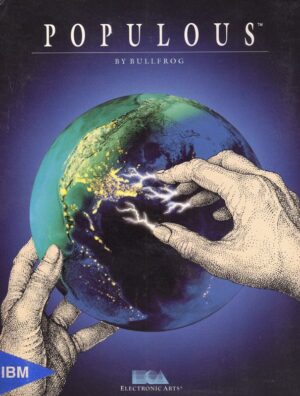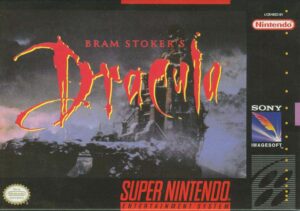Retro Replay Review
Gameplay
Bishōjo Senshi Sailor Moon: Another Story adopts a classic Japanese‐style RPG framework that will feel instantly familiar to fans of Final Fantasy and Chrono Trigger. Players form a party of up to four Sailor Guardians—each with unique strengths and elemental affinities—and embark on turn‐based battles where positioning is visualized with your party on the right and enemies on the left. Attacks, spells, and items occupy separate menu entries, keeping the interface streamlined yet flexible.
(HEY YOU!! We hope you enjoy! We try not to run ads. So basically, this is a very expensive hobby running this site. Please consider joining us for updates, forums, and more. Network w/ us to make some cash or friends while retro gaming, and you can win some free retro games for posting. Okay, carry on 👍)
What sets the combat apart is the integration of combo attacks and team techniques reminiscent of Chrono Trigger’s dual and triple techs. As you level up, your Sailor Guardians unlock special cooperative moves—such as Sailor Moon’s Moon Gorgeous Meditation paired with Sailor Mercury’s Aqua Illusion—that deal spectacular damage and often come with striking visual effects. Managing SP (special points) and timing these combo moves against waves of minions, street gangs, and boss creatures adds a tactical layer to each encounter.
Outside of battle, exploration unfolds in the futuristic city of Crystal Tokyo, with branching paths, hidden treasures, and NPCs dispensing side quests or bits of lore. The world map allows you to travel between districts, spaceports, and even alien outposts. Random encounters are moderate in frequency, ensuring a steady stream of experience without grinding becoming a chore. Inventory management, equipment upgrades, and occasional mini‐games—such as gathering rare materials for Luna—round out the gameplay loop.
Graphics
Developed for the Super Famicom, Another Story boasts colorful 16‐bit sprites that capture the essence of Naoko Takeuchi’s original manga designs. Each Sailor Guardian is rendered with expressive animations, from Sailor Mars’ fiery attacks to Sailor Jupiter’s thunderbolts. The character portraits during dialogue sequences convey emotion effectively despite the technical constraints of the era.
The backgrounds range from gleaming crystal spires of Crystal Tokyo to ominous alien caverns. Tilework is crisp, and attention to detail—such as futuristic signage and lunar motifs—helps immerse players in the 30th‐century setting. Boss battles are accompanied by larger, more elaborate sprite sheets that emphasize menacing poses and attack animations, providing memorable visual set pieces.
While the color palette occasionally feels limited in darker areas, clever use of shading and palette swaps keeps environments from feeling bland. Special attack sequences trigger full‐screen effects—flashes of light, swirling constellations, and elemental bursts—that remain visually impressive decades later. Overall, the graphics strike a fine balance between nostalgia and clarity.
Story
Set shortly after the events of Bishōjo Senshi Sailor Moon S, Another Story transports players to a Crystal Tokyo enjoying a fragile peace. Usagi Tsukino, now a seemingly ordinary fourteen-year-old again, is thrust into action when a mysterious meteorite approaches Earth and the Ginzuishou (Mystic Silver Crystal) trembles. The stakes escalate as street gangs and spies loyal to the enigmatic Apsu begin undermining the city’s harmony.
The narrative unfolds through a mixture of animated cutscenes and on‐screen dialogue. Fans of the anime will appreciate seeing familiar faces—Sailor Mercury, Mars, Jupiter, Venus—and how each Guardian’s personality shines when faced with new challenges. The writing balances lighthearted banter (Usagi’s comedic moments remain a highlight) with darker turns, such as confronting the minions of Darkness and unraveling Apsu’s true motives.
Although the overarching plot follows a linear progression, side missions and optional character interactions deepen the lore. Completing these optional threads not only yields powerful gear but also reveals backstory details—like Luna’s origins in the 30th century and the Guardians’ resilience in the face of cosmic threats. This blend of main‐story urgency and optional exploration keeps players invested from start to finish.
Overall Experience
Bishōjo Senshi Sailor Moon: Another Story remains a standout RPG for both Sailor Moon aficionados and retro gaming enthusiasts. The fusion of beloved characters, a solid turn‐based combat system, and an original story arc set in Crystal Tokyo offers a compelling package that has aged remarkably well. Those who appreciate strategic party management and combo mechanics will find plenty to enjoy.
The pacing strikes a comfortable balance: battles test your tactics without dragging on, while dungeon exploration provides occasional puzzles and platforming elements. Music and sound effects—though simple by modern standards—complement each area with memorable melodies and atmospheric cues. The soundtrack, featuring synth‐driven tracks and sparkling arpeggios, reinforces the game’s futuristic yet magical vibe.
On the downside, the absence of an official English release means navigating menus and dialogue in Japanese or relying on fan translations. However, dedicated players willing to overcome the language barrier will be rewarded with a rich RPG experience that stays true to Sailor Moon’s spirit. In sum, Another Story is a lovingly crafted title that delivers on gameplay depth, visual charm, and narrative heart.
 Retro Replay Retro Replay gaming reviews, news, emulation, geek stuff and more!
Retro Replay Retro Replay gaming reviews, news, emulation, geek stuff and more!









Reviews
There are no reviews yet.